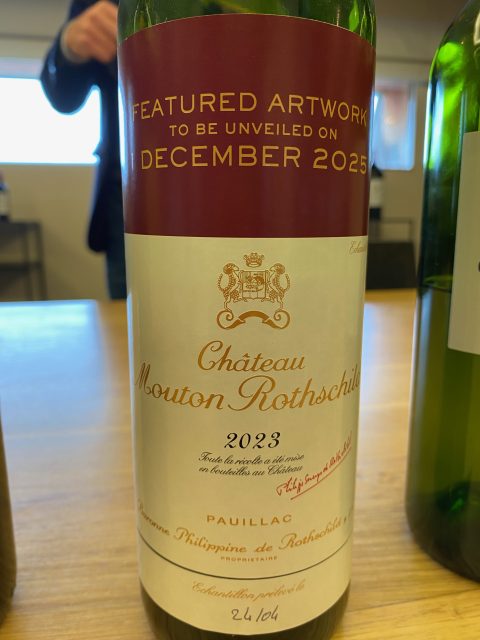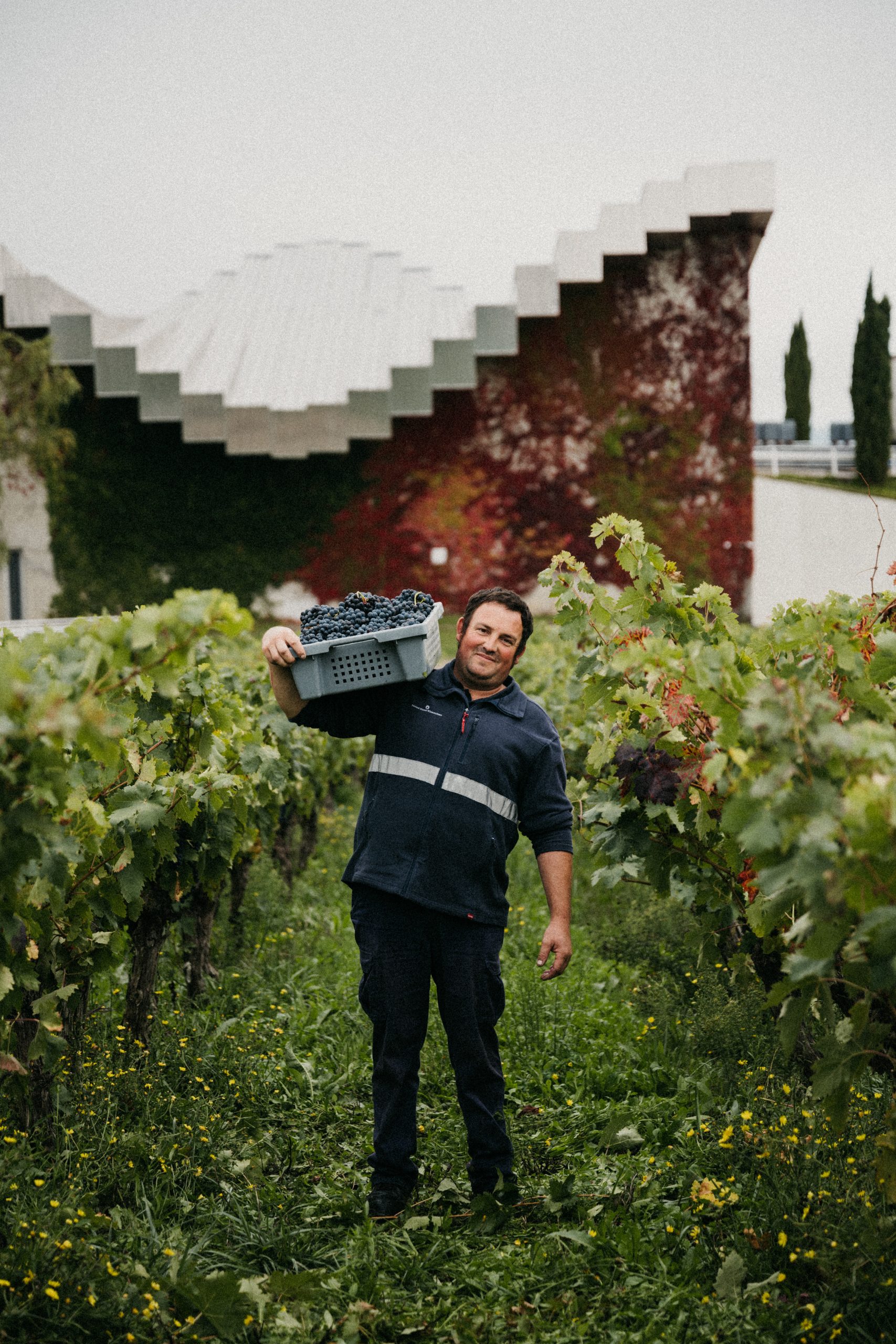Mouton Rothschild leads en latest primeur releases, down 37% on last year
There has been a slew of releases from Bordeaux over the long bank holiday weekend, led by Château Mouton Rothschild, which released the 2023 vintage at a 37.2% on the 2022 opening price, ahead of Angélus 25.7% year-on-year fall. But what kind of value are they offering?

Yesterday saw the release of Château Mouton Rothschild at €324 per bottle, or £4,068 per case of 12 to the international trade – an impressive 37% discount on last year’s offer. According to Antonio Galloni (Vinous) this 96-99 point scoring wine is “shaping up to be one of the best of the vintage on the Left-Bank”. Unsurprisingly, Liv-ex noted that this offered “reasonable value to those who can secure an allocation” – however, it noted that the 2014 vintage is available at a discount and obviously benefits from additional years in bottle.
The estate’s second wine, Le Petit Mouton de Mouton Rothschild 2023 also hit the market on Bank Holiday Monday, at £1,644 per case of 12 – giving a smaller discount of 25.1% on last year’s release price to €132 per bottle ex-négociant, or a fall of 26.7% on the €180 per bottle of the 2022 release.
Meanwhile another top estate, Château Angélus 2023 was released this morning at €260 per bottle ex-négociant – again, this was at a smaller ‘discount’ on last year’s release than the widely hope 30%. It was down 25.7% on the 2022 opening price, however it is still the second most expensive Angélus on the secondary market, Live-ex‘s data shows. According to Jane Anson it is “beautifully measured, skillful and fragrant”while db’s Colin Hay was impressed, calling it “a wine of great harmony and poise. Very long – with the length sustained by the quality of the Cabernet fruit, the signature of Angélus” and awarding it 96-98 points.
Other 2023 vintages released on the market include Château Talbot at €36 per bottle ex-négociant, down 25.0% on the 2022 opening price; Château d’Armailhac 2023 (€32.40 per bottle ex-négociant); Château Haut-Batailley, at €36.00 per bottle ex-négociant, down 16.7% on the 2022’s opening price and a “promising” Château Lafon-Rochet 2023, at €27.50 per bottle ex-négociant – a 19.1% decrease from the 2022 release of €34. Available to the international trade at £330 per case of 12, this wine was awarded a barrel score of 91-93 points (Neal Martin), but according to Liv-ex, it remains among the most expensive Lafont-Rochet on the market, with the 2020 vintage offering better relative value.
Chateau Malartic-Lagravière, Château La Lagune 2023 and Pédesclaux were released this morning, for £26.50, 25.50 and £25 ex-négociant respectively – all three saw a decrease of around the 25%/26% on last year’s opening price, a fraction above the 24% decrease for Château Chasse-Spleen 2023, whose opening price was €19.20 per bottle ex-négociant.
Finally Château Cantemerle was released on Friday at €16.80 per bottle ex-négociant – 19.0% on the 2022 release of €20.75 – unsurprising for a chateau that is keen to be known for its quality, rather than its great value.
Colin Hay’s tasting notes for the key Bordeaux 2023 en primeur releases

Pauillac
D’Armailhac (Pauillac; 70% Cabernet Sauvignon; 15% Merlot; 13% Cabernet Franc; 2% Petit Verdot; pH 3.75; 13.7% alcohol; tasted at the UGC press tasting at the Cité du Vin and then at Clerc-Milon with Jean-Emmanuel Danjoy). Smokier and more ferrous and saline in its minerality than Clerc-Milon, it is also more red-fruited and a little less sumptuous in texture. Redcurrant and blackcurrant. Tense, with the tension almost of a white wine if you shut you eyes and project. This is fresh and vibrantly energetic, but the acidity is much more noticeable and it’s not, for me, quite at the level of the rest of the Mouton flight, texturally ethereal though the tannins are. The fruit feels just a little stretched over the frame. 91-93.
Partner Content
Clerc-Milon (Pauillac; 72% Cabernet Sauvignon; 19% Merlot; 6.5% Cabernet Franc; 1.5% Carménère; 1% Petit Verdot; pH 3.83; 13.5% alcohol; tasted at the UGC press tasting at the Cité du Vin and at the property with Jean-Emmanuel Danjoy). Rose petals, crushed and concentrated, damsons, brambles, blackberries all freshly picked and de-husked or de-stoned. Floral, petal-y and with a hint of saffron too. There’s a lovely cassis and cedar element to this that actually makes me think of Le Petit Mouton. There’s also mirror pool clarity in the mid-palate. Excellent. So juicy and refreshing. This used to be difficult to taste en primeur. Not today. 93-95.
Mouton Rothschild (Pauillac; 93% Cabernet Sauvignon; 7% Merlot; 13.3% alcohol; pH 3.79; the old-vine yields here were above the 10 year average for Mouton; tasted with Jean-Emmanuel Danjoy at Clerc-Milon). Very floral. Crushed rose petals, fresh rose petals, rose water and iris. Black cherries and brambles, damson too. Black pepper. Candlewax and candle smoke from the cathedral hinting perhaps at the gothic cathedral architecture of the palate to come. Walnut and olive oil. Chiselled. Incredible texturally. Broader than Le Petit Mouton but with something of the same kaleidoscope of velvety layers imparting a great sensation of depth. But this is deceptive as it’s so glacial, glassy and mirror pool. I love, too, the hint of blackcurrant that appears like a phantom from the lake just before the finish. A wine with a staggeringly dynamic freshness, almost a whirlpool of upwelling Cabernet cassis disrupting the cool tranquillity of the surface that we encounter first. So soft and gracious. Beautifully composed. And yet thrilling and utterly captivating at the same time. 97-99.
Le Petit Mouton (Pauillac; 79% Cabernet Sauvignon; 12% Merlot; 7% Cabernet Franc; 2% Petit Verdot; pH 3.74; 13.3% alcohol; tasted at Clerc-Milon with Jean-Emmanuel Danjoy). So cool and gracious. Plunge pool. Bramble and loganberry, mulberry. The fruit darkens with aeration, the berries joined by black cherries and assorted dark plums. Graphite. Quite broad initially, but then the tannins pinch and bring this back to the spine. Cascading layers of silky and velvety fruit make this very deep and reinforce the impression of concentration, density and compactness, but not at the expense of the sheer mobility and fluidity of the wine, with eddies of freshness disturbing the mirror pool. A fabulously composed and refined, cool and spiritual Petit Mouton. Very pure. Once again, I find this to star turn of the Pauillac 1st growth second wines. 93-95+.
Moulis-en-Médoc
Branas Grand Poujeaux (Moulis-en-Médoc). A glorious success in the context of the vintage, indeed this or any vintage. The essence of black cherry and black forest gateau, with that lovely deep dark chocolate note, maybe a little mocha too and the finest dark roasted coffee beans. Incredibly soft and caressing on the palate, with ultra-fine grained but still grippy tannins that structure the extremities of the wine over the palate, more like a 2020 or 2022. This seems to have risen above the challenges of the vintage. Excellent. 93-95.
St-Estèphe
Laffitte Carcasset (St-Estèphe; cru bourgeois supérieur; 50% Merlot; 45% Cabernet Sauvignon; 5% Cabernet Franc). An intensely dark (purple-black) berry fruit – mulberries, damsons and blueberries, all very much picked à point and, as a consequence, with a somewhat marked acidity. This, then, is quite strict and firm, very linear and just a little coarse on the finish. But I like the hint of florality and the tannins are certainly soft and refined. 88-90.
Related news
Castel Group leadership coup escalates
For the twelfth day of Christmas...
Zuccardi Valle de Uco: textured, unique and revolutionary wines




